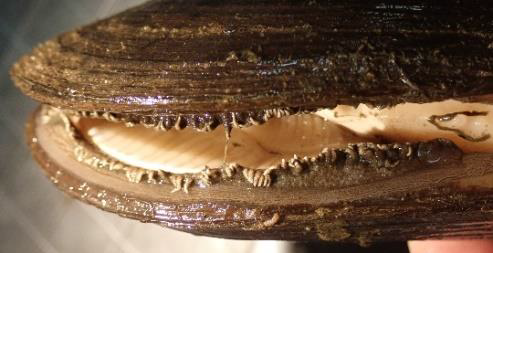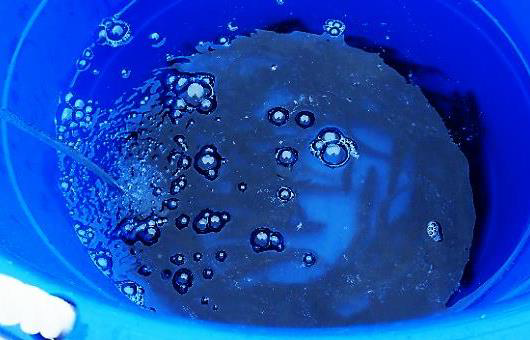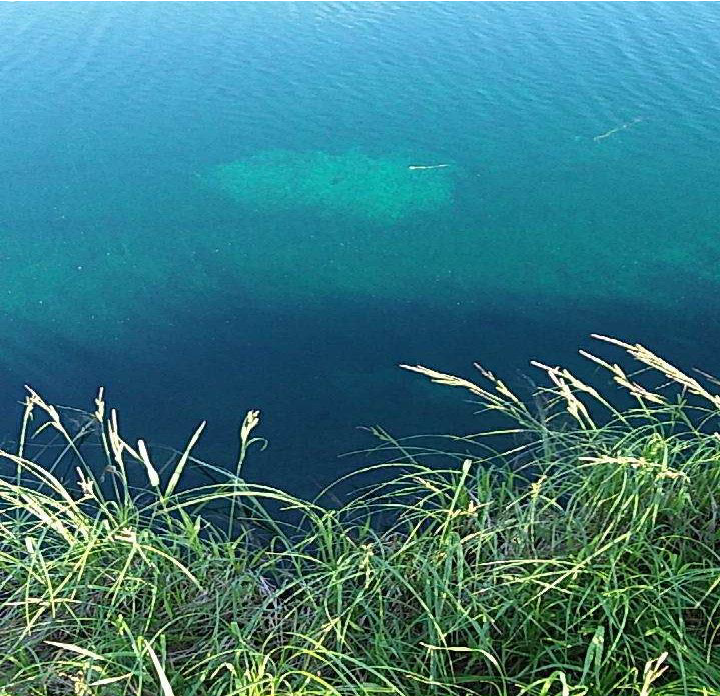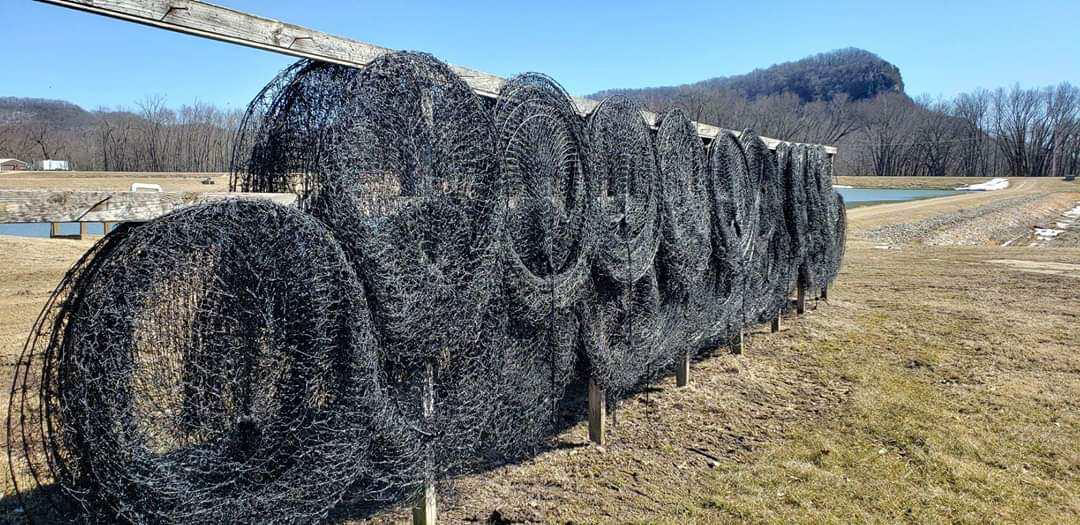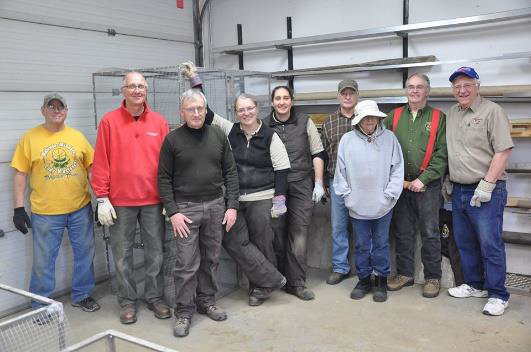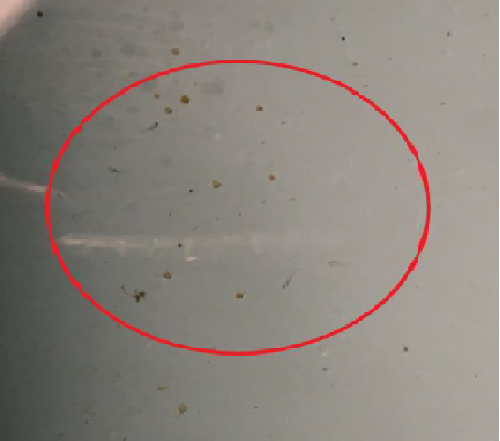
Three tiny logperch can be seen in the red circle (above, left). Photos by Megan Bradley/USFWS.
Hopefully you caught our article last month about spawning Logperch on station. Well, good news, the eggs we spawned are hatching and we have hundreds of Logperch fry going into a pond on station. Now, if you’ve seen other fish fry around the hatchery you might be surprised by these. The only sign that they’re in a tank is the tiny black eyes moving around in the water column. It looks a lot like you’ve sprinkled course ground black pepper, except that those tiny black specks are actively moving in the water column as the Logperch fry search for zooplankton to eat.
We were also able to use some of the Logperch adults that didn’t spawn as hosts for the federally endangered Snuffbox. In collaboration with the WI DNR we’re planning to restore Snuffbox populations in the Wolf River basin. About 20 days after the Logperch were infested we got our first Snuffbox juveniles dropping off. These first tiny babies (~150 ?m long) are growing at the hatchery as we wait for the rest of their cohorts to drop of the host fish. Hopefully these will soon go out into the Mobile Aquatic Rearing System to eat the natural food in Mississippi river water (bacteria and algae) and grow large enough to overwinter well at the hatchery for release in 2021.
By: Megan Bradley

